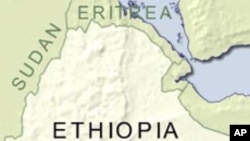Many countries in sub-Saharan Africa are still trying to achieve food security. Experts consider a household food secure when its occupants are not hungry or faced with starvation. In other words, food may be available, although not necessarily in abundance.
For more than two decades, the Ethiopian government, with the help of international aid agencies, has been trying to create communities that can produce enough food to feed themselves access adequate supplies of food. The effort is driven by concern over avoiding another food crisis like the one that led to the 1984 famine. Ever since the fall of the government of Mengistu Haile Mariam, officials have tried new approaches to reducing the effects of drought and poverty that threaten food security.
Shumsha
One hard-hit community was in the Shumsha area, north of Lalibela, in 1994. “Virtually every household was receiving food aid to survive,” said John Hoddinott, a senior researcher at the International Food Policy Research Institute (IFPRI). But new statistics show that the number of hungry people has decreased and the area is now on the verge of being food secure.
Access to markets
“No single factor can be credited with this change," Hoddinott said. “Rather [it was] a whole host of actions by government, markets and individuals.
"
One major factor, he says, is “the improved infrastructure, like roads that link the area to neighboring towns. This has not only enabled the farmers in Shumsha to take their products to markets in these towns, but (it has) also given them access to food markets.”
Increased access to education, with its social benefits, has contributed to the reduction of poverty in Shumsha. “Fifteen years ago almost no students went to school; now the primary school has over 800 students,” he says.
Improved income
Household income has increased because farmers are now allowed to have more than one job. That was not the case under the Mengistu government.
Countries that have succeeded in reducing hunger have had “more rapid growth in their agricultural sectors, slower population growth and higher ranking in the Human Development Index,” according to The State of Food Insecurity in the World 2009, issued by the UN Food and Agriculture Organization. The success of Shumsha can be replicated in other regions of Ethiopia and in other developing countries, says Hoddinott. But that would require “a combination of political will, governance and good use of resources.”





